In the ever-evolving world of kitchen appliances, contact grills have emerged as a favorite among culinary enthusiasts and health-conscious consumers alike. These versatile cooking devices have seen a significant surge in popularity, not just in Europe and America, but globally. This article delves into the factors that are driving the demand for contact grills, the technological innovations shaping the industry, the competitive landscape, the regulatory environment, and the challenges and opportunities within the supply chain. We also share insights from industry experts and highlight some success stories of contact grill producers.
Understanding Contact Grills: A Brief Overview
Contact grills, often referred to as flat grills or countertop grills, have become a popular kitchen appliance in the European and American markets. These versatile cooking devices are designed to cook food by applying heat from both above and below, thanks to their two flat metal plates that come together during use. Here’s a closer look at what makes contact grills a favorite among grill enthusiasts and home cooks alike.
At their core, contact grills are ideal for cooking a variety of foods, from meats and vegetables to sandwiches and cheeses. The even distribution of heat ensures that the food is cooked thoroughly and retains its juices, resulting in a deliciously tender and juicy outcome. The design of contact grills also makes them easy to use and clean, as they often feature non-stick surfaces and removable cooking plates.
The cooking plates in contact grills are typically made of stainless steel or aluminum, which are both durable and heat-conductive materials. This not only allows for efficient cooking but also contributes to the longevity of the appliance. The plates often have a raised pattern on them, which can help with creating grill marks and adding a unique texture to the food.
In the European market, contact grills are often seen as a convenient alternative to traditional outdoor grilling. Many consumers appreciate the fact that they can enjoy grilled flavors year-round, regardless of weather conditions. The compact size of contact grills also makes them a great choice for small kitchens or for those who prefer not to invest in a full-size grill.
In the United States, contact grills have a strong following among health-conscious consumers. The ability to cook with less oil or fat compared to other cooking methods, such as frying, has made contact grills a popular choice for preparing healthy meals. The sleek design and variety of features offered by different models have also contributed to their popularity.
Contact grills come in various sizes and configurations. Some models are designed to cook a single burger or a few slices of toast, while others can accommodate a full meal for a family. The size of the grill can depend on factors such as the number of people in the household and the types of dishes one likes to prepare.
The technology behind contact grills has also evolved over the years. Modern contact grills often come with features like adjustable heat settings, indicator lights to signal when the grill is ready, and even temperature control systems that maintain a consistent heat level throughout the cooking process. Some advanced models also include digital displays for precise temperature monitoring.
One of the standout features of contact grills is their versatility. They can be used to sear steaks, cook fish, toast bread, or even bake pastries. This dual-purpose functionality makes them a valuable addition to any kitchen. Moreover, the compact design allows for easy storage, which is a significant advantage in today’s increasingly space-conscious households.
In terms of design, contact grills have seen a variety of innovations. From sleek, minimalist lines to colorful and artistic designs, there’s a contact grill to match every kitchen aesthetic. The materials used in their construction range from durable stainless steel to non-slip rubber feet that prevent the grill from moving around during use.
Safety is another important aspect of contact grills. Many models are equipped with cool-touch handles and safety locks that prevent accidental opening when hot. Some also feature automatic shut-off mechanisms to turn off the grill if it’s left unattended for an extended period, adding an extra layer of safety.
When it comes to cleaning, contact grills are a breeze. The non-stick surfaces make it easy to release food from the plates, and most models come with removable cooking plates for easy cleaning. This is particularly beneficial for those who prefer not to spend a lot of time cleaning up after cooking.
In summary, contact grills have become a staple in the kitchen due to their convenience, versatility, and health benefits. Whether you’re a seasoned grill master or a novice cook, a contact grill can enhance your culinary experience by providing a quick and easy way to enjoy deliciously grilled foods. With a wide range of options available, there’s a contact grill out there to suit every taste and budget.
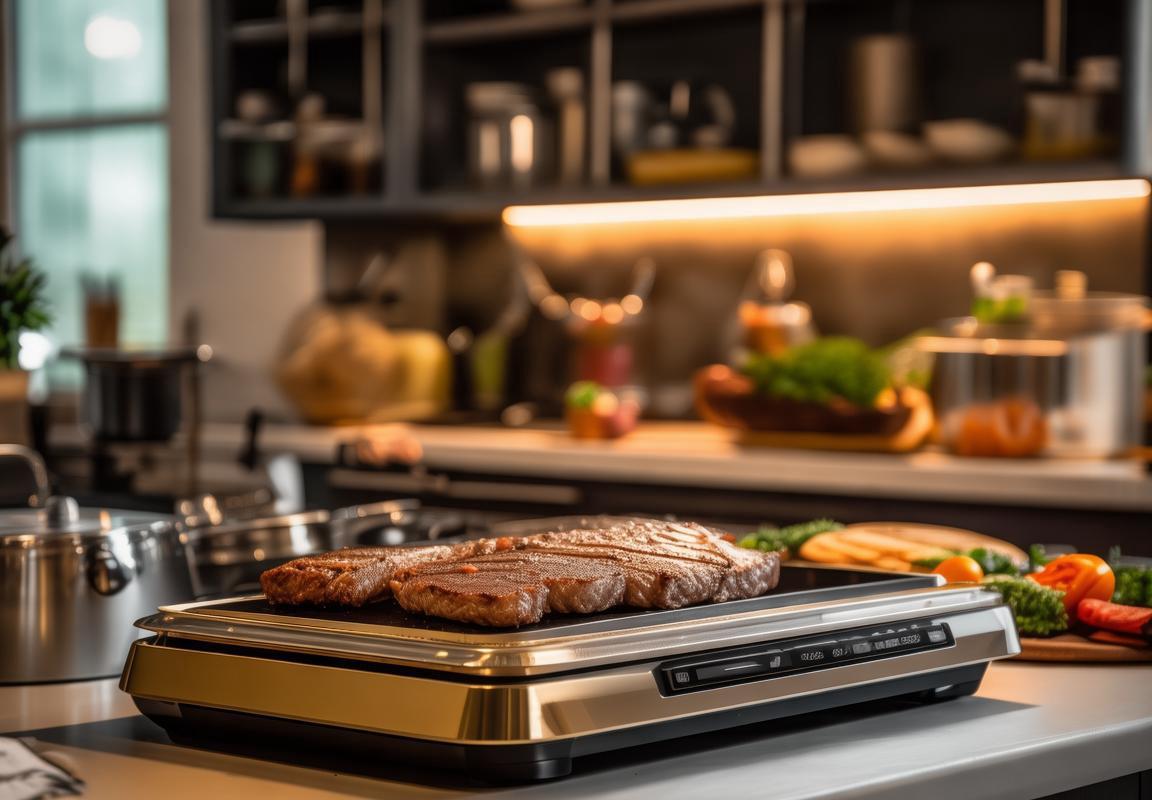
The Rise of Contact Grills in the European and American Markets
The European and American markets have witnessed a remarkable surge in the popularity of contact grills over recent years. This shift can be attributed to several factors that have converged to make these countertop cooking appliances a staple in many kitchens.
Grills have long been a favorite for outdoor cooking enthusiasts, but the convenience of contact grills has brought this experience indoors. These compact, easy-to-use devices offer a quick and efficient way to achieve that perfect sear on meats, vegetables, and even sandwiches. The rise in their popularity can be attributed to the following key factors:
-
Convenience and Speed: In a fast-paced world, convenience is king. Contact grills provide a quick alternative to traditional cooking methods like frying or broiling. With the ability to cook a variety of foods simultaneously, they have become a time-saving solution for busy households.
-
Healthier Cooking Options: As health and wellness trends continue to grow, consumers are seeking out cooking methods that minimize oil usage. Contact grills, which require little to no oil, have become a preferred choice for those looking to maintain a healthy diet without sacrificing flavor.
-
Versatility: Contact grills are not just for burgers and hot dogs. They can handle a wide range of ingredients and cooking techniques, from searing steaks to grilling vegetables and even creating panini sandwiches. This versatility has made them a multi-functional appliance in the kitchen.
-
Technology Integration: Modern contact grills come with a variety of features that enhance the cooking experience. From adjustable heat settings to non-stick surfaces and built-in timers, these appliances are designed to be user-friendly and efficient.
-
Outdoor Cooking Indoor: With the increasing popularity of outdoor living spaces and the desire for a similar cooking experience indoors, contact grills have filled a niche for those who love the taste of grilled food but may not always have access to an outdoor grill.
-
Culinary Trend Influence: The rise of culinary TV shows and food blogs has sparked an interest in cooking at home. Contact grills have become a go-to tool for those looking to emulate the professional-grade cooking seen on television.
-
Economic Factors: In times of economic uncertainty, consumers often seek more affordable solutions. Contact grills offer a cost-effective way to enjoy grilled food without the need for expensive outdoor equipment.
-
Marketing and Branding: Manufacturers have played a significant role in promoting contact grills through targeted marketing campaigns. Highlighting the ease of use, health benefits, and versatility of these appliances has helped to boost their appeal.
-
Globalization of Food Culture: As food cultures from around the world become more accessible, consumers are looking to recreate international dishes at home. Contact grills allow for the creation of a variety of global cuisines, from Japanese yakitori to Mediterranean-style kebabs.
-
Sustainability: With a growing emphasis on sustainability, appliances that use less energy and resources are becoming more attractive. Contact grills, which typically require less electricity than larger ovens, align with these eco-friendly values.
The rise of contact grills in the European and American markets is a testament to the evolving demands of consumers. As the culinary landscape continues to change, these versatile appliances are well-positioned to remain a favorite in many kitchens.
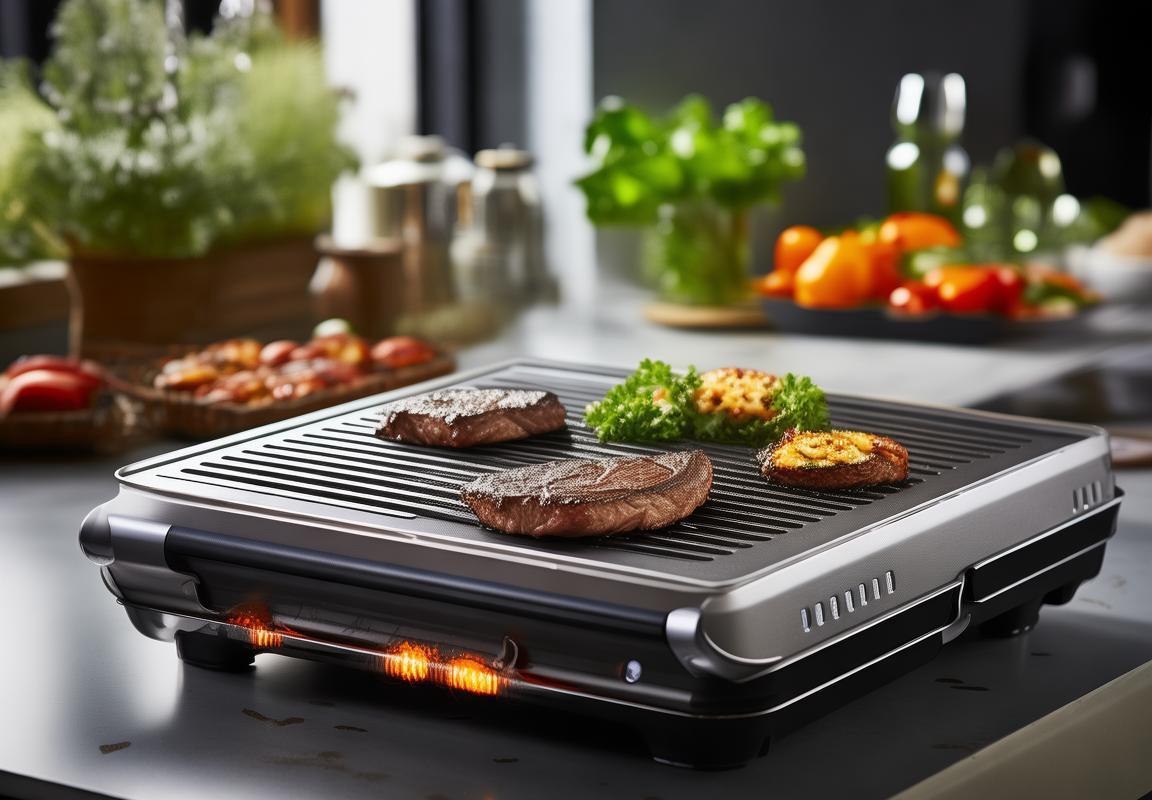
Market Dynamics: Key Trends in Contact Grill Production
Contact grill production has experienced a significant surge in the European and American markets, driven by a variety of factors that have reshaped the landscape of this niche industry. Here’s an exploration of the key trends that have emerged:
The growing trend of health-conscious consumers has been a major driver in the contact grill market. As people become more aware of the health benefits of cooking with less oil, contact grills have become a popular choice. These appliances allow for the cooking of meats and vegetables with a minimal amount of fat, leading to dishes that are not only delicious but also nutritious.
The rise of outdoor cooking has also played a crucial role in the contact grill’s popularity. With the increasing number of people seeking to enjoy cooking and dining experiences in the great outdoors, contact grills have become a staple for tailgating, camping, and backyard barbecues. Their compact size and ease of use make them ideal for these settings.
Another significant trend is the integration of smart technology into contact grills. Modern models now come with features like Bluetooth connectivity, which allows users to control their grill remotely via their smartphones. This level of convenience and innovation has attracted tech-savvy consumers looking for the latest kitchen gadgets.
The demand for versatile cooking appliances has also fueled the growth in contact grill production. Many consumers are seeking multifunctional products that can perform various cooking tasks, such as grilling, searing, and even baking. As a result, manufacturers have responded by creating contact grills with adjustable temperature controls and additional surfaces for different cooking techniques.
Sustainability is another key trend in the contact grill market. With environmental concerns on the rise, manufacturers are focusing on producing grills that are energy-efficient and made from recycled materials. This not only appeals to eco-conscious consumers but also helps companies to reduce their carbon footprint.
The customization of cooking experiences is becoming more important as well. Consumers are looking for grills that allow them to tailor their cooking to their specific tastes. This includes features like interchangeable grill plates, which can accommodate different types of food and cooking preferences.
The rise of gourmet cooking has also had an impact on contact grill production. As people become more interested in experimenting with different flavors and ingredients, contact grills offer a way to achieve a variety of textures and cooking outcomes. This has led to the development of specialized grills that cater to specific cuisines or cooking styles.
In the realm of marketing, social media has become a powerful tool for contact grill producers. By leveraging platforms like Instagram and YouTube, companies are able to showcase their products in action, demonstrating their capabilities and engaging with potential customers. This digital marketing approach has proven to be highly effective in generating buzz and driving sales.
The globalization of food culture has also influenced contact grill production. As people from different parts of the world migrate and share their culinary traditions, contact grills have become a means to replicate these diverse cooking techniques at home. This has encouraged manufacturers to create a wider range of contact grills that can handle a variety of international recipes.
Lastly, the competitive landscape has spurred innovation. With numerous brands entering the market, companies are constantly looking for ways to differentiate themselves. This has led to a constant stream of new features and designs, ensuring that contact grills remain a dynamic and evolving product category.
In summary, the contact grill production market is dynamic, with trends ranging from health and sustainability to technology and customization. As these trends continue to shape consumer preferences, it’s clear that the future of contact grills is bright, with endless possibilities for innovation and growth.
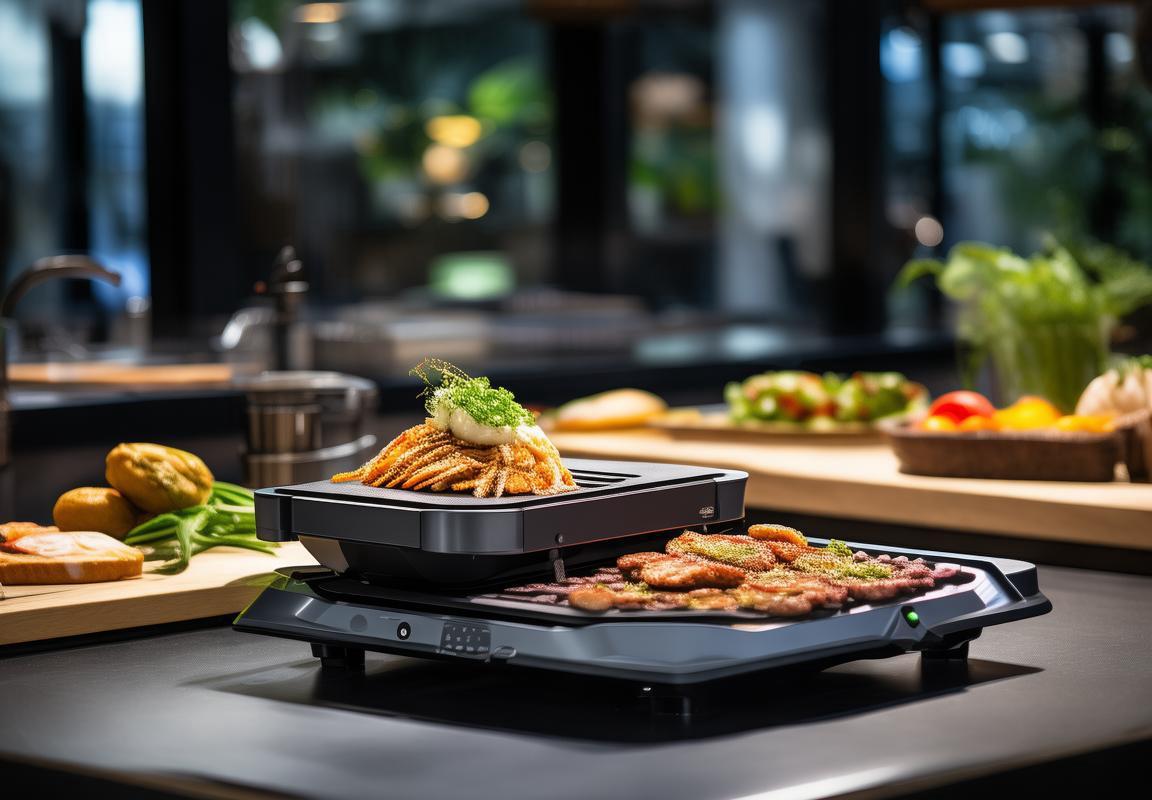
Consumer Preferences: What’s Driving the Demand?
In recent years, the demand for contact grills has surged, driven by a variety of consumer preferences and lifestyle changes. These preferences are shaping the market dynamics and influencing the production trends within the industry. Let’s delve into some of the key factors that are fueling this demand.
Gone are the days when grilling was solely associated with outdoor barbecues. Consumers today are increasingly looking for convenience and efficiency in their cooking methods. Contact grills offer a quick and easy way to achieve that perfect sear on steaks, burgers, and sandwiches without the need for an open flame or charcoal.
One of the most significant trends driving the demand for contact grills is the rise of health-conscious consumers. With a growing awareness of the nutritional value of food, many individuals are opting for grilling as a healthier alternative to frying. Contact grills allow for direct contact with the cooking surface, reducing the need for excessive oil and thereby cutting down on fat content.
The convenience factor is another major driver. Contact grills are compact, easy to clean, and often come with features that cater to busy lifestyles. Features like non-stick surfaces, removable cooking plates, and rapid heating capabilities make them a favorite among those who value efficiency and ease of use.
Technology has also played a crucial role in shaping consumer preferences. Modern contact grills come equipped with advanced features such as adjustable temperature controls, programmable settings, and even digital readouts. These innovations not only enhance the cooking experience but also provide peace of mind to consumers who want to ensure that their food is cooked to perfection.
The rise of the “foodie” culture has also contributed to the increased demand for contact grills. Chefs and culinary enthusiasts are always on the lookout for new and exciting ways to prepare food, and contact grills offer a versatile platform for experimenting with different flavors and techniques. Whether it’s creating gourmet burgers, searing delicate fish fillets, or crafting unique vegetarian dishes, contact grills have become a staple in many home kitchens.
In addition to these factors, there’s a growing interest in international cuisines. Contact grills allow for the authentic preparation of dishes that traditionally require grilling methods found in other cultures. From Latin American churrasco to Asian yakitori, consumers are embracing the variety that contact grills offer in replicating these global flavors at home.
The preference for outdoor living has also had a significant impact on the contact grill market. As people spend more time in their gardens and patios, the demand for cooking appliances that can be used both indoors and outdoors has surged. Contact grills fit this bill perfectly, providing a seamless transition between the kitchen and the grill.
Moreover, the environmental consciousness among consumers has led to a demand for greener cooking solutions. Contact grills, with their lower energy consumption and minimal waste, align with this eco-friendly mindset. As more consumers look for ways to reduce their carbon footprint, contact grills are becoming a more appealing option.
Lastly, the demographic shift towards larger, blended families has influenced the market as well. Contact grills can accommodate a variety of food preferences and dietary needs, making them suitable for a diverse range of family members. This versatility is a strong selling point, as it caters to the varied tastes and nutritional requirements of different household members.
In conclusion, the demand for contact grills is being driven by a combination of convenience, health consciousness, technological advancements, and cultural trends. As these preferences continue to evolve, so too will the production strategies of contact grill manufacturers, ensuring that they meet the dynamic needs of consumers around the world.

Innovations in Contact Grill Technology
Contact grill technology has evolved significantly over the years, offering consumers a variety of features that cater to different preferences and needs. Here’s a glimpse into the latest innovations shaping the contact grill market:
-
Smart Sensors and Temperature ControlModern contact grills are now equipped with smart sensors that precisely monitor and maintain the ideal cooking temperature. These sensors ensure that food is cooked evenly without the risk of burning, providing users with greater control and confidence in their grilling outcomes.
-
Variable Heat Settings and ZonesInnovative contact grills come with multiple heat settings and even heating zones. This allows users to adjust the cooking temperature for different types of food, from delicate fish fillets to hearty steaks. The ability to isolate specific areas for higher or lower temperatures is particularly beneficial for complex recipes that require varied cooking conditions.
-
Non-Stick Coating and Easy CleaningThe non-stick coating on contact grills has been a staple for years, but recent advancements have improved its durability and resistance to scratching. This not only simplifies the cleaning process but also extends the life of the grill. Some models even feature self-cleaning functions that use steam to loosen and lift away food particles, reducing the need for scrubbing.
-
Integrated Searing StationsMany contact grill models now include a built-in searing station, which provides an intense heat source for creating those perfect grill marks. This dual-purpose feature allows for a more authentic grilling experience, as users can start with the high heat for searing and then lower the temperature for even cooking.
-
Cooking Functions and PresetsAdvanced contact grills often come with a range of cooking functions and presets designed for specific types of food. Whether you’re grilling vegetables, burgers, or even desserts, these models can automatically adjust the heat and cooking time to achieve the best results. The convenience of presets is particularly appealing for those who are new to grilling or looking to streamline the process.
-
Energy Efficiency and Eco-Friendly FeaturesWith growing environmental concerns, manufacturers are focusing on energy efficiency. Some contact grills now feature eco-friendly technologies that reduce power consumption and cooking times without compromising on performance. These features not only save money on energy bills but also contribute to a greener planet.
-
Portability and Compact DesignFor those with limited kitchen space or a penchant for outdoor cooking, the development of portable contact grills has been a game-changer. These compact grills are lightweight and easy to transport, making them perfect for camping trips, tailgating, or even small kitchens. Despite their size, they often retain the same advanced features as larger models.
-
Enhanced Cooking SurfacesInnovations in the cooking surface have led to the development of materials that offer improved heat retention and conductivity. Some grills now use materials that allow for faster cooking times and more consistent heat distribution, enhancing the overall cooking experience.
-
Safety FeaturesSafety has always been a priority in contact grill technology, and recent models have introduced additional safety features. These include automatic shut-off mechanisms that activate if the grill is left unattended for too long, as well as non-slip bases and handles that prevent accidents and burns.
-
Customization and PersonalizationManufacturers are also focusing on customization options to cater to personal tastes. This includes variable cooking plate materials that can be swapped out for different textures and cooking results, as well as customizable cooking modes that allow users to experiment with unique recipes.
As contact grill technology continues to advance, it’s clear that the future holds even more exciting developments. From smart integration with kitchen appliances to fully immersive grilling experiences, the possibilities are vast, and consumers can look forward to a wide array of features that will further enhance their grilling adventures.
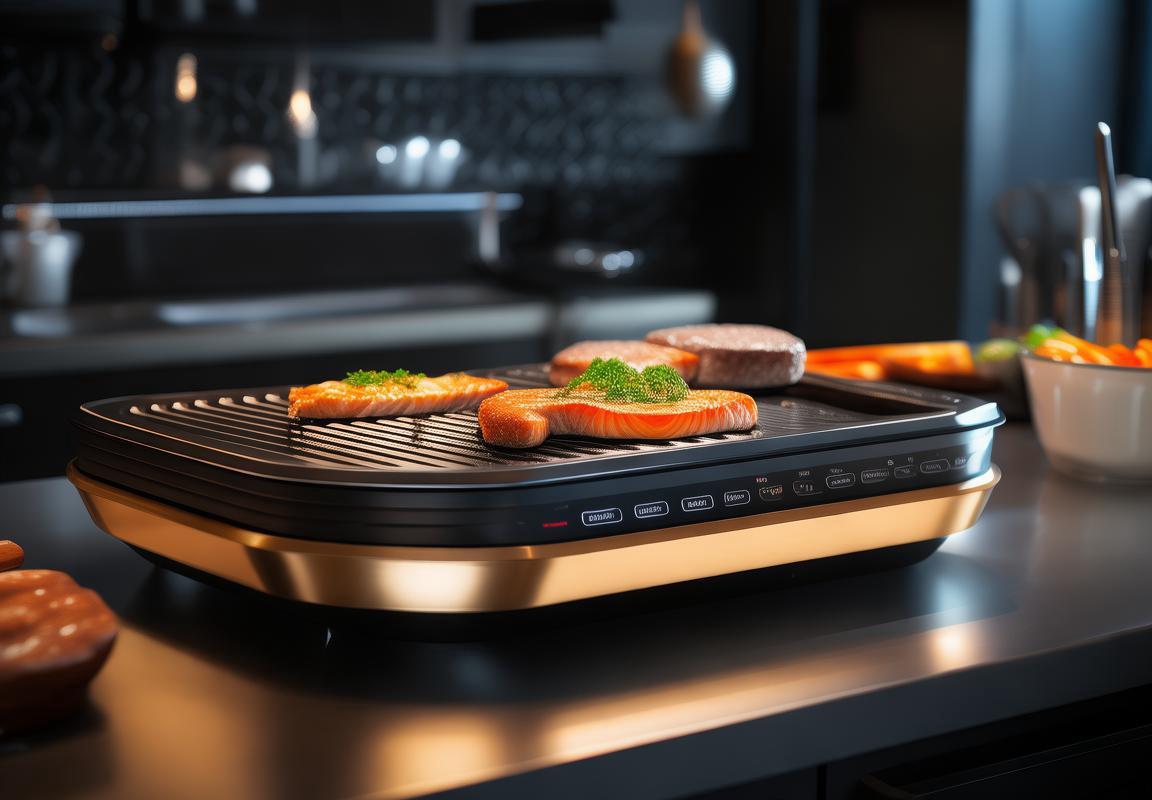
Competition Landscape: Major Players and Market Share
In the competitive world of contact grill production, several key players have emerged as leaders, each carving out a significant piece of the market share. These major players not only offer a wide range of products but also drive innovation and set trends within the industry. Here’s a closer look at some of the key players and their market standing.
German Engineering ExcellenceGerman manufacturers are renowned for their high-quality appliances, and the contact grill market is no exception. Brands like Miele, Thermomix, and Tefal have established themselves as go-to names for those seeking precision and durability. Their products often feature advanced technology, such as adjustable heat settings and non-stick surfaces, which cater to both professional chefs and home cooks alike.
American Innovation in DesignAmerican companies have been at the forefront of design and innovation in the contact grill sector. Brands like George Foreman and Char-Broil have become synonymous with ease of use and convenience. These companies have introduced features like removable drip trays and adjustable temperature controls, making grilling simpler and more enjoyable for consumers. Their market share is bolstered by continuous product development and marketing strategies that resonate with American consumers’ preference for fast and healthy cooking methods.
Japanese Precision and FunctionalityJapanese brands like Sunbeam and Caso are known for their attention to detail and functionality. These companies offer a range of contact grills that are not only efficient but also aesthetically pleasing. Their products often incorporate smart features like digital temperature displays and automatic shut-off functions, appealing to consumers who value both performance and safety. The Japanese market share in contact grills is substantial, with these brands often being the preferred choice for those who prioritize quality over price.
French Culinary InfluenceFrench culinary heritage has influenced the contact grill market, with brands like Seb and Magimix offering products that cater to those who appreciate a blend of traditional cooking methods and modern convenience. These companies have designed contact grills that not only sear food beautifully but also allow for even cooking and browning. The French market share is robust, reflecting the country’s love for culinary excellence and the ease with which these appliances can enhance home cooking.
Italian Design and StyleItalian brands like DeLonghi and Breville have brought a touch of Italian design and style to the contact grill market. Known for their sleek and modern aesthetics, these brands have captured the interest of consumers who want their kitchen appliances to be as stylish as they are functional. The Italian market share in contact grills is growing, as these brands appeal to consumers who are willing to invest in quality and design.
Asian Market GrowthThe contact grill market in Asia is witnessing rapid growth, with companies like Panasonic and Hitachi leading the way. These brands offer a variety of contact grills that cater to the diverse tastes and preferences of Asian consumers. From traditional Asian cooking methods to fusion cuisine, these companies have products that can handle a wide range of recipes. The Asian market share is expanding, driven by an increasing number of households that are embracing healthier cooking options.
Global Distribution and Brand ExpansionMajor players in the contact grill market have expanded their reach through global distribution channels. Online retail platforms have played a significant role in this expansion, allowing brands to reach consumers worldwide. Companies like Breville and Thermomix have leveraged e-commerce to offer their products to a broader audience, thereby increasing their market share across different regions.
Collaborations and PartnershipsTo maintain a competitive edge, contact grill producers are engaging in collaborations and partnerships. For instance, some brands are working with chefs and culinary experts to develop new products that cater to specific dietary needs or cooking techniques. These strategic alliances not only help in innovating new products but also enhance brand credibility and market position.
In conclusion, the competition landscape in the contact grill market is diverse and dynamic, with major players from various countries bringing their unique strengths and market strategies. Whether it’s German engineering, American innovation, Japanese precision, French culinary influence, Italian design, or Asian market growth, the industry is characterized by a rich tapestry of offerings that cater to a global consumer base.

Regulatory Environment: Navigating Safety and Standards
In the ever-evolving landscape of kitchen appliances, the regulatory environment plays a pivotal role in shaping the safety and standards that guide contact grill production. Ensuring that these appliances meet stringent safety protocols is not only a legal requirement but also a testament to the manufacturer’s commitment to consumer well-being. Here’s a closer look at the regulatory environment that contact grill producers must navigate.
Grill manufacturers must adhere to a variety of international and local regulations, each with its own set of standards. For instance, the United States and the European Union have distinct regulations that govern the production and sale of kitchen appliances, including contact grills.
In the U.S., the National Electrical Code (NEC) is a key regulatory framework that outlines the safety requirements for electrical installations. Contact grill producers must ensure that their products comply with the NEC, which includes specifications for electrical wiring, grounding, and circuit protection. Additionally, the U.S. Consumer Product Safety Commission (CPSC) enforces safety standards for consumer products, including kitchen appliances, to prevent injuries and deaths related to product misuse.
Similarly, in Europe, the Low Voltage Directive (LVD) and the Electromagnetic Compatibility (EMC) Directive are crucial for contact grill producers. These directives set out the safety and performance requirements for electrical equipment, including kitchen appliances. Compliance with these directives is not only a legal obligation but also a mark of quality that consumers look for when purchasing appliances.
Safety standards for contact grills also encompass mechanical and thermal aspects. The International Electrotechnical Commission (IEC) provides a range of standards that cover the design, construction, and operation of electrical appliances. These include standards for electrical safety, thermal hazards, and mechanical hazards.
One of the most significant regulatory challenges for contact grill producers is the management of heat. These appliances generate high temperatures, and any malfunction can lead to burns or fires. Therefore, manufacturers must ensure that their products have effective heat management systems, including temperature controls and safety shut-offs.
Another critical area of regulation is the use of materials. Contact grills are often made from metals, plastics, and other materials that must meet specific safety criteria. For example, the migration of harmful substances from the materials into the food being cooked is strictly regulated. In the EU, the REACH regulation governs the registration, evaluation, authorization, and restriction of chemicals, which can impact the materials used in contact grill production.
Environmental considerations are also a part of the regulatory environment. Producers must ensure that their manufacturing processes are environmentally friendly and that the appliances themselves are designed for recycling or safe disposal at the end of their life cycle. This includes the use of recyclable materials and the elimination of hazardous substances.
Certification and labeling are essential components of the regulatory environment. Contact grill producers need to obtain certifications from recognized bodies, such as Underwriters Laboratories (UL) or the European Committee for Electrotechnical Standardization (CENELEC), to demonstrate compliance with safety standards. These certifications are often a requirement for market access and can be a significant selling point for consumers who prioritize safety.
Moreover, the regulatory environment is not static; it is subject to change. New standards are developed, and existing ones are updated to reflect advancements in technology and changes in consumer behavior. Contact grill producers must stay informed about these changes and adapt their production processes accordingly.
In conclusion, navigating the regulatory environment is a complex task for contact grill producers. It requires a deep understanding of international and local regulations, a commitment to safety and quality, and the ability to adapt to changing standards. By doing so, manufacturers can ensure that their products not only meet legal requirements but also gain the trust and confidence of consumers.
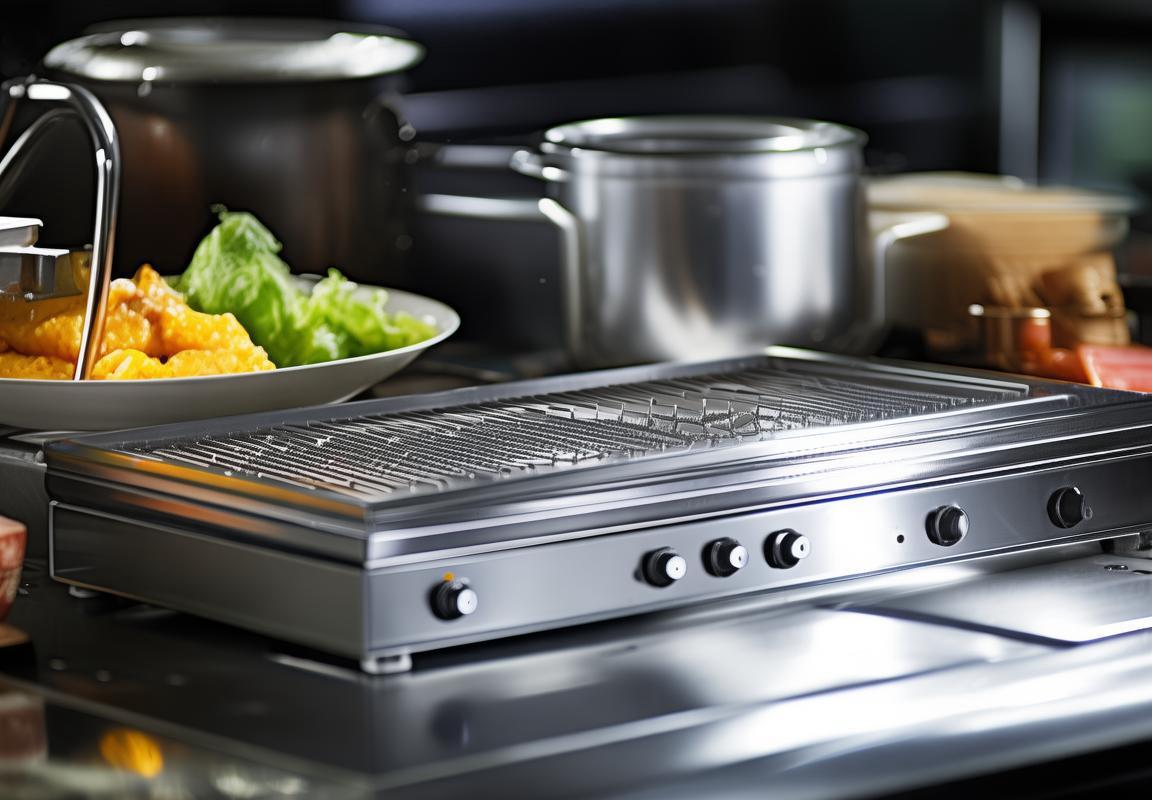
Supply Chain Insights: Challenges and Opportunities
In the intricate web of the global, challenges and opportunities coexist, shaping the future of contact grill production. From raw material sourcing to final product distribution, the supply chain is a critical component that influences both cost and quality. Let’s delve into the complexities and potential for growth in this domain.
Manufacturers grapple with the fluctuating prices of stainless steel, the primary material used in contact grills. These prices can be heavily influenced by global market dynamics, such as the cost of steel production, which often involves significant energy use. As a result, companies must navigate the delicate balance between maintaining product quality and managing expenses.
Moreover, the sourcing of components from various suppliers adds another layer of complexity. Quality control becomes paramount when dealing with a diverse array of parts, each requiring meticulous inspection to ensure they meet the stringent standards set by contact grill producers. This rigorous process can be both time-consuming and costly, yet it is essential for ensuring consumer safety and satisfaction.
Logistics also pose a significant challenge. The transportation of raw materials and finished products across continents involves coordination with multiple stakeholders, including shipping companies, customs officials, and warehousing services. Delays and inefficiencies in this supply chain segment can lead to increased costs and longer lead times for customers.
Despite these challenges, the supply chain presents numerous opportunities for innovation and efficiency. For instance, the adoption of advanced inventory management systems has allowed companies to better predict demand and reduce excess inventory. This not only minimizes waste but also optimizes production schedules and resource allocation.
Furthermore, the integration of technology into the supply chain has opened doors for real-time tracking and traceability. Through the use of RFID tags and GPS technology, manufacturers can monitor the movement of goods from the factory floor to the final consumer, ensuring transparency and accountability at every stage.
Sustainability is another area where the supply chain can lead to significant opportunities. As consumers become more environmentally conscious, there is a growing demand for eco-friendly products and practices. This trend has prompted manufacturers to explore alternative materials and production methods that are more sustainable and energy-efficient.
In the realm of opportunities, partnerships with local suppliers can be particularly beneficial. By working closely with suppliers in the regions where they operate, companies can reduce transportation costs and support local economies. This localization can also lead to shorter lead times and a better understanding of regional market needs.
The supply chain also offers the chance to tap into emerging markets. As contact grill consumption grows in countries outside of traditional markets, companies can expand their reach and cater to new customer bases. This expansion requires a nuanced understanding of local regulations, consumer preferences, and distribution channels.
The integration of the supply chain with the latest in digital technologies, such as the Internet of Things (IoT), presents a world of possibilities. IoT can enable predictive maintenance of machinery, optimize energy usage, and streamline operations. By harnessing the power of data analytics, companies can uncover insights that drive improvements in every aspect of the supply chain.
Lastly, the supply chain can be a powerful tool for social responsibility. By ensuring fair labor practices and ethical sourcing, companies can enhance their brand reputation and contribute positively to society. This approach not only supports a sustainable business model but also fosters trust and loyalty among consumers.
In summary, while the supply chain for contact grill production is fraught with challenges, it also harbors a wealth of opportunities. By embracing innovation, fostering sustainable practices, and building strong partnerships, companies can navigate the complexities and emerge as leaders in a dynamic and competitive market.

Expert Predictions: Future Outlook for Contact Grill Producers
The contact grill market has been witnessing a surge in demand, and this trend is expected to continue as consumers seek convenient and efficient cooking solutions. This section delves into the factors driving this demand, from health consciousness to technological advancements.
Health and Wellness TrendOne of the primary drivers of the contact grill market’s growth is the increasing health consciousness among consumers. With a growing awareness of the benefits of grilling over traditional cooking methods like frying, contact grills have become a favorite among those looking to reduce fat and cholesterol in their diets. The ability to cook with less oil has made these grills a staple in health-conscious households.
Versatility and ConvenienceContact grills offer a high degree of versatility, allowing users to grill, sear, and even bake. This multi-functional aspect appeals to busy consumers who want to prepare a variety of dishes with minimal effort. The compact size of these grills also makes them convenient for small kitchens or for those who prefer outdoor cooking.
Technological AdvancementsThe integration of technology into contact grills has further fueled demand. Features like non-stick surfaces, adjustable temperature controls, and digital displays have made grilling more precise and enjoyable. Smart grills that can be controlled via smartphone apps are also gaining popularity, reflecting the broader trend of smart home technology.
Eco-Friendly CookingAs environmental concerns grow, contact grills have an added appeal due to their energy efficiency. They require less heat to cook food compared to traditional grills, leading to lower energy consumption and reduced carbon emissions. This eco-friendly aspect is resonating with environmentally conscious consumers.
Culinary ExplorationContact grills have also become a tool for culinary exploration. They enable users to experiment with different flavors and cooking techniques, which can be particularly appealing to food enthusiasts and aspiring chefs. The ability to achieve a perfect sear and grill marks on meats and vegetables is a key attraction for those looking to elevate their cooking skills.
Economic FactorsThe economic downturn has led to a shift in consumer spending habits, with many opting for more affordable cooking solutions. Contact grills, being generally more affordable than traditional outdoor grills or oven ranges, have become an attractive option for budget-conscious consumers.
Globalization of Cooking TrendsThe globalization of cooking trends has also played a role in the demand for contact grills. As people become more exposed to international cuisines, they seek out cooking methods that can replicate these flavors at home. Contact grills provide a means to achieve similar results to those found in restaurants.
Cultural ShiftsCultural shifts towards a more casual dining experience have also contributed to the popularity of contact grills. The ease of use and the ability to cook a variety of dishes quickly align with the fast-paced lifestyle of many consumers. This has led to an increase in the use of contact grills for everything from everyday meals to casual entertaining.
In summary, the demand for contact grills is driven by a combination of health and wellness trends, convenience, technological advancements, and economic factors. As these trends continue to evolve, the contact grill market is poised for sustained growth.
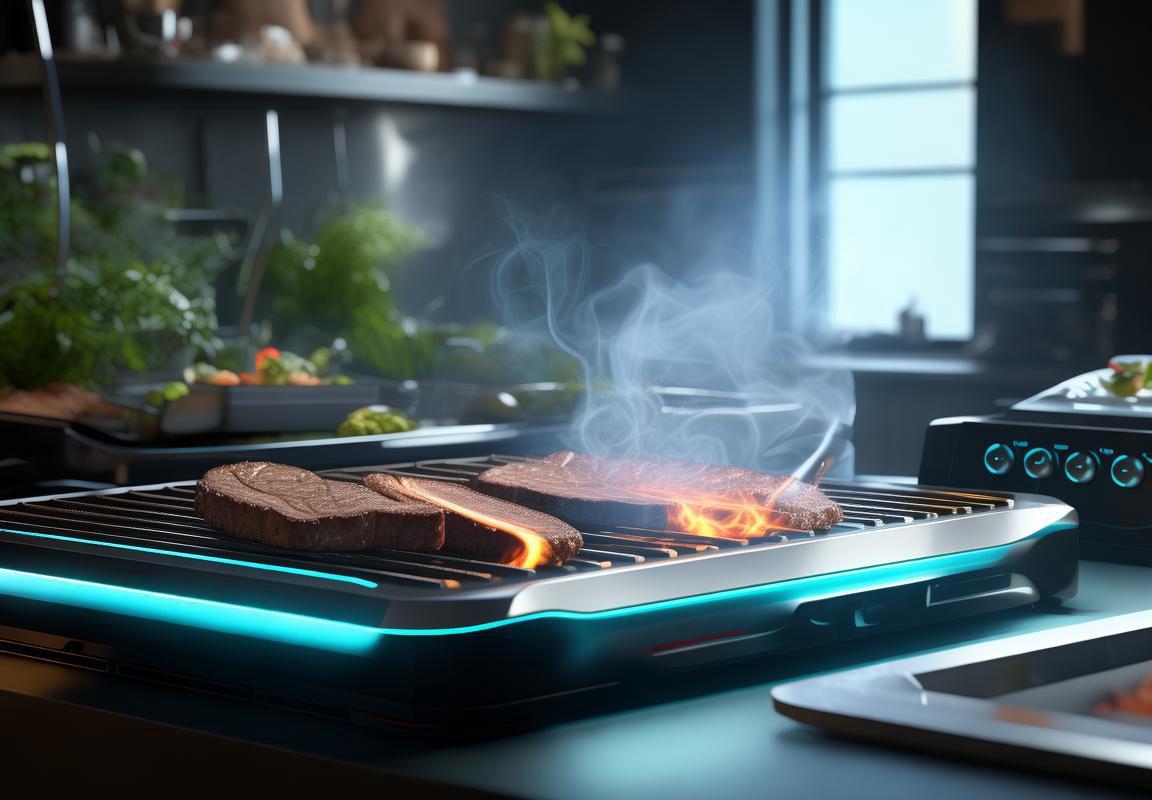
Contact Grill Producer Success Stories: Case Studies
In the world of contact grill production, there are several success stories that showcase the resilience, innovation, and strategic acumen of companies in this niche market. Here are a few case studies that highlight the journeys of these successful producers:
The story of GriddleTech began with a simple observation: traditional grills were often messy and inefficient. Founders recognized the need for a sleeker, more convenient cooking solution. By focusing on design and functionality, they developed a line of contact grills that not only cooked food evenly but also minimized cleanup. Their commitment to quality and customer satisfaction quickly gained traction, leading to a surge in sales and partnerships with high-profile retailers.
GriddleTech’s success can be attributed to several factors. They invested heavily in research and development to perfect their technology, ensuring that their grills were not just innovative but also reliable. They also understood the importance of branding and marketing, using social media to connect with consumers and showcase the benefits of their products. This strategy helped them build a loyal customer base and secure a significant market share.
Another notable success story is that of Flameless Grill Innovations. This company saw an opportunity in the market for a contact grill that could be used indoors without the risk of fire or smoke. By focusing on safety and convenience, they developed a range of flameless contact grills that became a hit among urban dwellers and health-conscious consumers.
Flameless Grill Innovations’ growth was fueled by their ability to anticipate market trends and adapt quickly. They leveraged the rise of health consciousness by emphasizing their grills’ ability to cook with less oil, thus promoting healthier eating habits. Their commitment to sustainability and eco-friendly materials also resonated with environmentally conscious consumers, further boosting their brand.
In the competitive landscape of contact grill production, it’s not uncommon for companies to face challenges. However, one such company, Heatwave Grills, turned these challenges into opportunities. Initially, they struggled with quality control issues, which affected their reputation and sales. But instead of giving up, they invested in better manufacturing processes and employee training.
This strategic pivot paid off, as Heatwave Grills began to receive positive feedback for their improved products. They also took advantage of the growing market for outdoor cooking by developing a line of portable contact grills. This expansion allowed them to tap into a new segment of consumers and increase their market share.
The story of EcoGrill Producers is one of passion and commitment to a cause. This small, family-owned business focused on creating contact grills that were not only efficient but also environmentally friendly. They used sustainable materials and energy-saving technologies to produce grills that were both cost-effective and eco-friendly.
EcoGrill Producers’ success lies in their dedication to their mission. They actively participated in environmental initiatives and partnered with local farms to source organic ingredients for their promotional events. This approach not only helped them build a strong brand identity but also fostered a sense of community and loyalty among their customers.
One of the more recent success stories comes from SmartGrill Solutions, a company that specializes in smart contact grills. They recognized the potential of integrating technology into kitchen appliances and developed grills that could be controlled via smartphone apps. This innovation allowed users to monitor cooking temperatures, adjust settings, and even receive recipe suggestions.
SmartGrill Solutions’ strategy was to position their product as a premium, high-tech appliance. They invested in marketing campaigns that highlighted the convenience and efficiency of their smart grills, targeting tech-savvy consumers who were willing to pay a premium for cutting-edge technology. This approach has paid off, as they have seen a steady increase in sales and a growing list of satisfied customers.
These case studies illustrate the diverse paths to success in the contact grill production industry. From focusing on design and functionality to embracing sustainability and technology, these companies have demonstrated that innovation, customer loyalty, and strategic thinking can lead to remarkable achievements. As the market continues to evolve, these success stories serve as inspiration for aspiring producers looking to carve out their own niche in the competitive landscape of contact grill manufacturing.